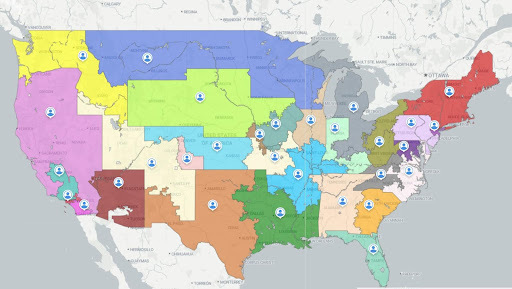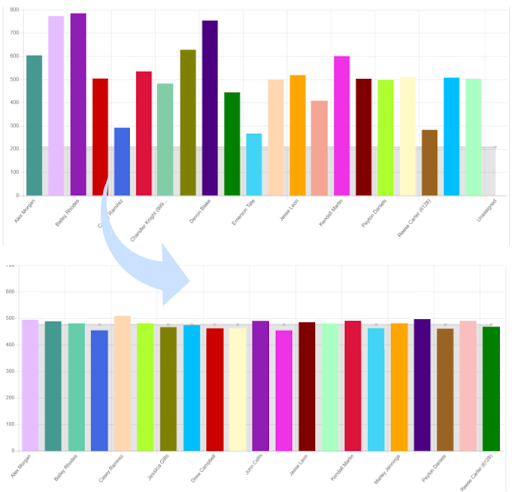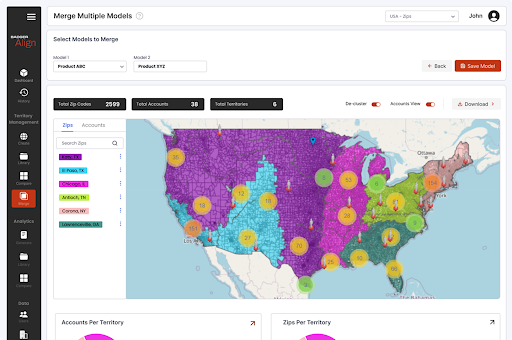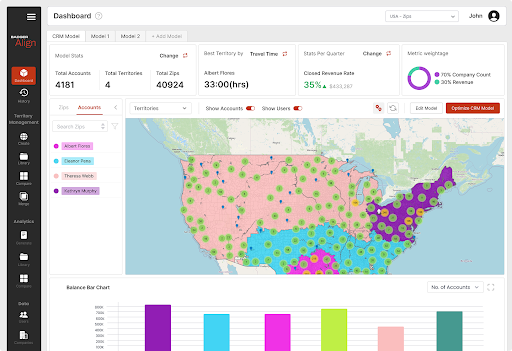News: Now offering SSO.
Learn more
News: Now offering SSO.
Learn moreWhen your sales team is spread across multiple cities, states, or even countries, things can get chaotic fast. Who’s covering which accounts? Are territories balanced? Are reps spending more time driving than selling?
That’s where territory management comes in. It’s the process of organizing, assigning, and optimizing sales territories to improve productivity and performance. Whether you’re a sales rep trying to stay focused or a manager allocating resources, understanding territory management is essential to staying competitive in today’s market.


Territory management is the strategic process of defining and organizing geographic or account-based areas of responsibility for sales reps. It ensures that every rep knows which accounts or regions they own, and gives managers visibility into the field, allowing them to extract insights from rep activity and make data-driven decisions across the team.
Territory management happens at two levels:
Further, sales territories can be based on:
The goal is to create a sales territory map with clear structure so that sales reps can focus their time and energy on the right prospects without internal conflict or wasted effort. You might also hear the term sales region map to describe high-level layouts of these territories.
A sales territory map or even several sales territory maps are often used to visually represent which accounts or regions each rep is responsible for. These visual tools are essential when you need to map sales territories efficiently and ensure balanced distribution.

Effective territory management leads to significant performance gains across your team. Here’s why it matters:
Ultimately, territory management is about doing more with the same (or fewer) resources.
Sales territory management isn’t a one-and-done activity - it’s an ongoing process that should be revisited at key moments to keep performance and coverage optimized. What are some of those key moments when you should evaluate and adjust your sales territories?
Regularly reviewing and refining your sales territory mapping process ensures that your team’s coverage stays efficient, competitive, and aligned with business goals - no matter the business cycle, the shifting market, or any internal changes.
Need to match the right accounts to the right reps? Check out how territory alignment helps achieve business goals.”

Managing territories well is a combination of data, strategy, and iteration. Here’s a basic step-by-step process:
Define your goals - What are you optimizing for? Revenue? Coverage? Growth?
Analyze your market - Use account data, demographics, travel time, and past sales to understand territory potential.
Segment your customers and prospects - Group accounts by size, location, vertical, or value.
Create initial territories - Assign reps to clear, non-overlapping areas based on your segmentation. The best modern tools will facilitate this automatically.
Review and test - Monitor performance, get rep feedback, and track KPIs like sales volume, close rate, or customer churn.
Adjust as needed - Territory management isn’t one-and-done. Update alignments when markets shift or team members change.
Once you’ve analyzed your market and segmented your customers, the next step is to create a sales territory map. This gives you a visual overview of coverage and helps ensure a logical, data-driven strategy and assignment of resources.
Territory management comes with pitfalls. Here’s how to anticipate and prevent them:
To prevent issues, it's important to regularly review your sales territory boundaries and adjust them based on performance and market shifts.
Searching for more advanced or overlooked sales territory management techniques? Look no further than this 12 point guide!

As you can imagine, there are tools that can assist with territory management. While this guide isn’t focused on specific software, it’s important to understand the types of features that make territory management tools effective for both reps and managers.
Many sales teams also benefit from looking at territory map examples - whether created manually or digitally - to better understand what an effective structure might look like.
Using Salesforce or Hubspot as your CRM? Check out these expansive guides on Salesforce mapping software and HubSpot mapping software.
Territory management is more than just drawing lines on a map - it’s a strategic approach to maximizing sales potential, improving rep performance, and delivering a better customer experience. When done right, it creates clarity, reduces waste, and unlocks new growth opportunities.
Whether you’re just starting to organize your team’s territories or looking to refine an existing system, investing in good territory management practices is a smart move for any sales leader.
Wondering about the best territory management tools? Look no further than this ultimate software guide for field teams.
Badger Maps is a routing & mapping app that automates data collection and uplevels field team performance. From planning your day to managing your territories, Badger optimizes every aspect of the field sales process.
Looking for our logo?
Grab a Zip packed with our logo in PNG and EPS formats.
Get Started now with a free trial of Badger Maps, no credit card required!
free trial